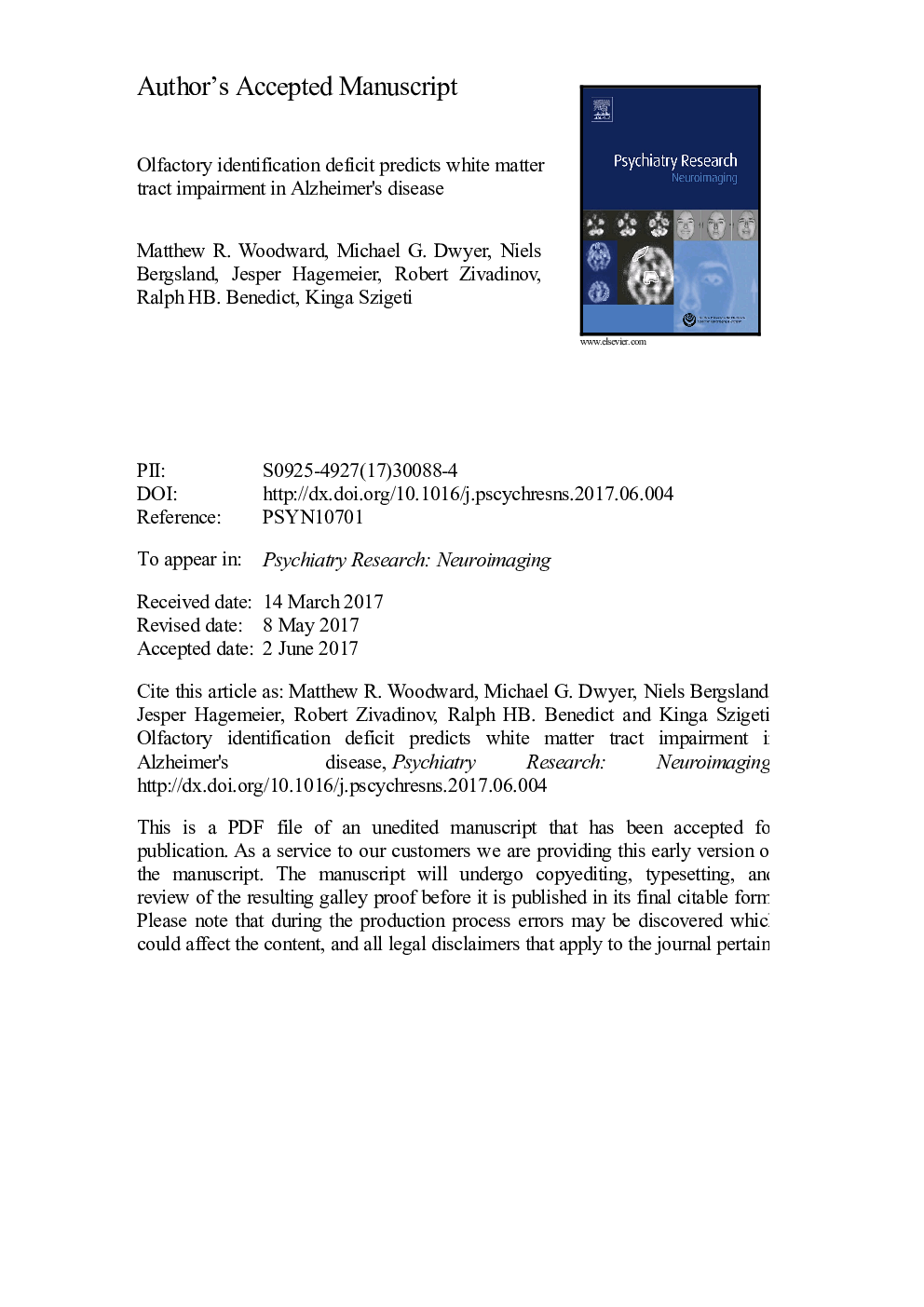| کد مقاله | کد نشریه | سال انتشار | مقاله انگلیسی | نسخه تمام متن |
|---|---|---|---|---|
| 4933924 | 1433887 | 2017 | 27 صفحه PDF | دانلود رایگان |
عنوان انگلیسی مقاله ISI
Olfactory identification deficit predicts white matter tract impairment in Alzheimer's disease
ترجمه فارسی عنوان
کسری شناسایی رژیم غذایی بیماری آلزایمر را پیش بینی می کند
دانلود مقاله + سفارش ترجمه
دانلود مقاله ISI انگلیسی
رایگان برای ایرانیان
کلمات کلیدی
موضوعات مرتبط
علوم زیستی و بیوفناوری
علم عصب شناسی
روانپزشکی بیولوژیکی
چکیده انگلیسی
Olfactory identification deficit (OID) has been associated with both aging and Alzheimer's disease (AD). In the context of an amnestic disorders, OID predicts conversion to AD. Neuroanatomical correlates could increase specificity and sensitivity and elucidate the mechanistic differences between OID in AD and aging. Cross-sectional analysis of white matter microstructural changes was performed using diffusion tensor imaging (DTI) and tract-based-spatial-statistics in amnestic mild cognitive impairment (aMCI), AD and normal controls (NC) in 66 subjects (26 AD, 15 aMCI, 25 NC). DTI 3-Tesla MRI scans were analyzed and subject level means for fractional anisotropy (FA), mean diffusivity (MD), radial and axial diffusivity (λ1D and λ2,3D) were calculated. Linear regression models were applied using DTI markers as predictor and OID as outcome. OID was associated with increased λ1D in aMCI and increased MD, λ1D and λ2,3D in AD. Voxel-wise analyses revealed widespread differences in all markers in AD. There were significant differences in λ1D in aMCI, particularly in the olfactory tract. OID is correlated with microstructural white matter changes as early as in aMCI. This study may help elucidate the biological basis for olfactory impairment in Alzheimer's disease. Neuroanatomical correlates could help distinguish OID associated with AD and that associated with aging.
ناشر
Database: Elsevier - ScienceDirect (ساینس دایرکت)
Journal: Psychiatry Research: Neuroimaging - Volume 266, 30 August 2017, Pages 90-95
Journal: Psychiatry Research: Neuroimaging - Volume 266, 30 August 2017, Pages 90-95
نویسندگان
Matthew R. Woodward, Michael G. Dwyer, Niels Bergsland, Jesper Hagemeier, Robert Zivadinov, Ralph HB. Benedict, Kinga Szigeti,
